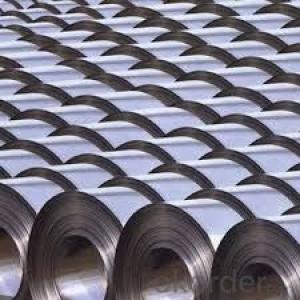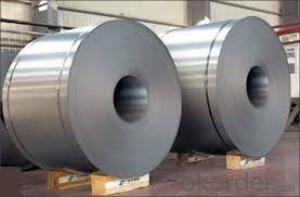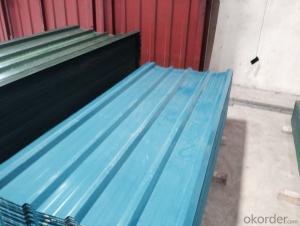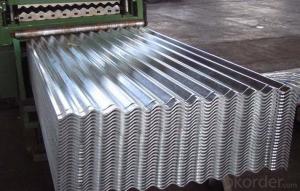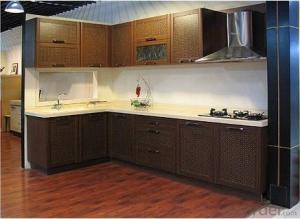Hot Rolled Steel Coil /Cold Rolled Steel Coil/color steel rolled
- Loading Port:
- Shanghai
- Payment Terms:
- TT OR LC
- Min Order Qty:
- 20 m.t.
- Supply Capability:
- 9000 m.t./month
OKorder Service Pledge
OKorder Financial Service
You Might Also Like
Hot rolled coils/plates
Type: steel coil and steel plates
Material: SS400-Q235-Q345-SPHC
Width:1250mm 1500mm 1800mm 2000mm
HOT-ROLLED COIL/PLATES(Material: SS400-Q235A/B-SPHC) | |||
2.00*1250/1500L | 3.50*1250/1500L | 5.75*1250/1500L | 11.50*1250/1500L |
2.30*1250/1500L | 3.75*1250/1500L | 7.50*1250/1500L | 11.75*1250/1500L |
2.50*1250/1500L | 4.50*1250/1500L | 7.75*1250/1500L | 13.50*1250/1500L |
2.75*1250/1500L | 4.75*1250/1500L | 9.50*1250/1500L | |
3.00*1250/1500L | 5.50*1250/1500L | 9.75*1250/1500L | |
PATTERN-ROLLED COIL/PLATES(Material: Q235A-Q235B) | |||
3.00*1250L | 3.75*1250L | 4.75*1250L | 5.75*1250L |
3.50*1250L | 4.50*1250L | 5.50*1250L | 7.50*1250L |
MIDDEL-PLATE(Material: Q235A/B-Q345A/B) | |||
8*1800/2000L | 16*1800/2000L | 25*1800/2000L | 45*1800/2000L |
10*1800/2000L | 18*1800/2000L | 30*1800/2000L | 50*1800/2000L |
12*1800/2000L | 20*1800/2000L | 35*1800/2000L | |
14*1800/2000L | 221800/2000L | 401800/2000L | |
Name | galvanized steel coil dx52d z gi |
Grade | GB/T-12754: 2006, JIS3302, EN 10142, ASTM A653, JIS G3302, SGCC/SGCH, GB/T2518, European Standard, ASTM A792, JIS G3321, JIS G3317 |
BASE PLATE | Cold rolled steel sheet, hot dipped zinc coated steel sheet hot dipped A-Z coated steel sheet |
EQUIPMENT | Double coating double baking; |
CAPACITY | 5000Mt/week |
SIZE | Thickness 0.18mm—2mm, width 40mm—1250mm |
ZINC COATING | 40g-275g /m2 |
PAINT THICKNESS | Top:20+-5um, back:5-7um |
COIL WGT | 3Mt - 8Mt |
COIL ID | φ508mm,φ610mm |
BASE SHEET | Cold rolled steel sheet, hot dipped zinc coated steel sheet (small, regular or zero spangle), hot dipped A-Z coated steel sheet |
SURFACE PAINT | EP, PE, HDP, SMP, PVDF |
COLOR SERIES | RAL color number series |
Applications of cold rolled steel sheet coil :
1) Automotive bodies: filters, fuel tanks, etc.
2) Construction materials: roofings, welding pipes,
3) Electric and electronic appliances: computer cans, etc.
4) Steel cans: containers, etc.
5) Steel furniture: washing machines, refrigerators, microwaves, etc.
6) Drums
7) Office equipment: printer, recorders, etc.
8) Motors and transformers
Process of cold rolled steel sheet coil :
Pay off reel-double cut shear-welder-notcher-entry accumulator-pre cleaning section-furnace-hot bridle-zinc pot-air knife-after cooler-water quench-dryer- skin pass mill-dryer-tension leveler-dryer-chemical coater-chemical oven-cooler-exit accumulator-oiler-exit shear-tension reel.
Features of cold rolled steel sheet coil :
1) cold rolled steel coils prices is manufactured to have a long durability, strong corrosion resistance and shiny surface.
2) cold rolled steel coils prices features excellent forming properties, paintability, weldability, and is suitable for fabrication by forming, pressing and bending.
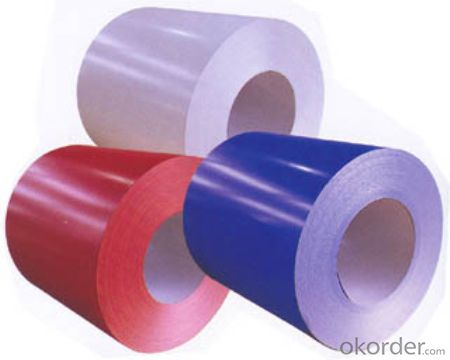
Q&A Acceptable payment term and way ?
ANSWER: T/T,L/C, T/T + L/C, D/P
Q&A Do you accept OA payment terms?
ANSWER: Yes, sure, but it normally depending on the order value
Q&A Do you have QC team?
ANSWER: Yeah, sure, our QC team is very important, they will keep the quality control for our products.
- Q:Can steel sheets be used in furniture applications?
- Yes, steel sheets can be used in furniture applications. Steel is a versatile material that offers strength, durability, and a sleek aesthetic, making it suitable for various furniture designs such as tables, chairs, cabinets, and shelving units.
- Q:Are steel sheets suitable for railway carriages?
- Indeed, railway carriages find steel sheets to be a fitting option. The robustness, resilience, and capacity to endure the ceaseless strain linked with train operations render steel a favored material for these carriages. Steel sheets provide the essential structural strength to uphold the carriage and its occupants, simultaneously safeguarding against impacts and harsh weather conditions. Furthermore, steel boasts relative cost-effectiveness and widespread accessibility, rendering it an optimal selection for the creation of railway carriages.
- Q:What is the process of applying anti-corrosion treatments to steel sheets?
- The process of applying anti-corrosion treatments to steel sheets typically involves several steps. Firstly, the steel sheets are thoroughly cleaned and degreased to remove any dirt, oils, or contaminants. This is done using specialized cleaning agents and techniques such as solvent cleaning or alkaline cleaning. Once the sheets are clean, they may undergo a process called surface preparation or surface conditioning. This step involves roughening the surface of the steel to enhance the adhesion of the anti-corrosion treatment. Common methods used for surface preparation include sandblasting, shot blasting, or acid etching. After surface preparation, the steel sheets are ready to be coated with the anti-corrosion treatment. There are various types of treatments available, such as metallic coatings, organic coatings, or conversion coatings. Metallic coatings, such as galvanizing or electroplating, involve applying a layer of metal onto the surface of the steel sheets to provide a protective barrier against corrosion. Organic coatings, such as paint or powder coatings, are applied as a liquid or powder and form a protective film over the steel surface. Conversion coatings involve a chemical reaction with the steel surface to create a protective layer. The application of the anti-corrosion treatment can be done through several methods, including spraying, dipping, or brushing. The specific method used may depend on factors such as the type of treatment, the size of the steel sheets, and the desired finish. After the treatment is applied, the steel sheets may undergo a curing or drying process to ensure the treatment adheres properly and forms a durable protective layer. This can involve air drying, baking in ovens, or using heat lamps. Overall, the process of applying anti-corrosion treatments to steel sheets involves cleaning, surface preparation, coating application, and curing. These steps help to protect the steel from corrosion and extend its lifespan.
- Q:What are the different sheet metal piercing techniques for steel sheets?
- Steel sheets can be pierced using various techniques. These methods are employed to create holes or openings in the sheets based on specific requirements. Here are several different techniques for piercing: 1. Punching: Punching is a widely utilized technique that involves using a punch and die set to create holes in steel sheets. The punch is forced through the sheet, cutting out the desired hole shape or size. This technique is efficient and can be applied to a range of hole sizes and shapes. 2. Drilling: Drilling is another commonly employed technique for piercing steel sheets. It entails rotating a drill bit at high speed to create a hole in the sheet. Drilling is often used for smaller holes or when precision and accuracy are paramount. 3. Laser cutting: Laser cutting is a highly precise and versatile technique for piercing steel sheets. It employs a high-powered laser beam that is focused on the sheet, melting and vaporizing the material to create holes or shapes. Laser cutting offers high-speed production and can achieve complex designs with exceptional accuracy. 4. Notching: Notching is a technique used to create cutouts or grooves in steel sheets. It involves removing a portion of material from the edge or surface of the sheet, leaving behind a notch. Notching is frequently employed to produce tabs or slots that are useful for assembly purposes. 5. Stamping: Stamping is a technique where a die is pressed into the sheet metal to create a depression or raised feature. This method can be used to create holes, patterns, or embossed designs in steel sheets. Stamping is commonly used for decorative or functional purposes. 6. Shearing: Shearing is a process that employs a sharp blade to cut through the steel sheet, resulting in a straight-edge hole. This technique is typically used for larger holes or straight-line cuts. These are just a few of the numerous sheet metal piercing techniques available for steel sheets. The choice of technique depends on factors such as the desired hole size, shape, precision, speed, and cost-effectiveness.
- Q:Are steel sheets suitable for manufacturing HVAC grilles?
- HVAC grilles can be manufactured using steel sheets, which are a suitable material choice. Steel is widely favored for its strength, durability, and versatility when it comes to HVAC grilles. It possesses the capability to withstand the elevated temperatures and air pressures commonly found in HVAC systems. Steel sheets can be effortlessly molded into different shapes and sizes to meet specific grille designs and requirements. Moreover, steel is resistant to corrosion, a crucial factor in ensuring the long-lasting performance of HVAC grilles in both indoor and outdoor settings. In summary, steel sheets offer the essential properties and characteristics necessary for producing top-notch HVAC grilles.
- Q:Can steel sheets be used in HVAC applications?
- Yes, steel sheets can be used in HVAC applications. Steel sheets are commonly used in HVAC systems for various purposes such as ductwork, ventilation, and fabrication of components like air handling units and heat exchangers. Steel offers excellent strength, durability, and resistance to corrosion, making it suitable for these applications.
- Q:What is the difference between a smooth and patterned steel sheet?
- A plain and uniform surface characterizes a smooth steel sheet, devoid of any visible patterns or textures. It boasts a consistent and sleek appearance, rendering it ideal for situations that call for a clean and contemporary look. In contrast, a patterned steel sheet showcases a myriad of designs or textures that are either embossed or etched onto its surface. These patterns can range from simple geometric shapes to intricate motifs. People often opt for patterned steel sheets due to their decorative appeal, as they have the ability to enhance the visual interest of a space. They are commonly employed in architectural elements, such as wall panels or ceiling tiles, to create a distinct and artistic effect. When it comes to functionality, smooth steel sheets might offer slightly superior corrosion resistance due to their smoother surface. This makes them well-suited for applications that require protection against rust, such as in outdoor or marine environments. On the other hand, patterned steel sheets may exhibit reduced corrosion resistance due to the variation in surface texture, potentially providing less safeguarding against rust. In conclusion, the decision between a smooth and patterned steel sheet hinges on the desired aesthetic, functional requirements, and the intended application.
- Q:How do steel sheets perform in terms of electrical resistance?
- Compared to other materials, steel sheets exhibit a comparatively higher electrical resistance. Consequently, their conductivity falls short in comparison to metals such as copper or aluminum. The electrical resistance of steel sheets may fluctuate depending on variables like the sheet's composition and thickness. Generally speaking, steel sheets are regarded as inadequate conductors of electricity. Nevertheless, it is crucial to acknowledge that the application of specific coatings or treatments to the steel surface can diminish the electrical resistance.
- Q:How do you cut a steel sheet?
- To cut a steel sheet, you will need to use the appropriate tools and techniques. Here are a few common methods: 1. Power tools: The most common power tool used for cutting steel sheets is an angle grinder equipped with a cutting disc. Make sure to wear safety goggles and gloves while operating the grinder. Mark the cutting line on the sheet using a marker or chalk, then slowly and steadily guide the grinder along the marked line to cut through the steel. 2. Shears: If you are cutting a thin steel sheet, you can use manual or electric shears. These tools have a scissor-like cutting mechanism specifically designed for cutting metal. Place the steel sheet between the blades of the shears, aligning the cutting line with the blades, and apply steady pressure to cut through the sheet. 3. Plasma cutting: This method is best suited for thicker steel sheets. Plasma cutting involves using a high-velocity jet of ionized gas (plasma) to melt and sever the metal. It requires specialized equipment, such as a plasma cutter, which uses an electric arc to create the plasma jet. 4. Waterjet cutting: Another effective method for cutting steel sheets is waterjet cutting. It uses a high-pressure jet of water mixed with an abrasive substance (such as garnet) to cut through the metal. This technique is ideal for complex shapes and precise cuts, but it requires specialized machinery. Before attempting to cut a steel sheet, always prioritize safety. Wear appropriate protective gear, such as safety glasses, gloves, and a face shield if necessary. Additionally, ensure that you are working in a well-ventilated area to avoid inhaling any fumes or particles generated during the cutting process.
- Q:How do steel sheets perform in terms of weathering?
- Steel sheets perform well in terms of weathering due to their inherent strength and durability. They are highly resistant to corrosion and can withstand harsh weather conditions such as rain, snow, and extreme temperatures. Additionally, steel sheets can be further protected through coatings and treatments, enhancing their ability to resist weathering and prolonging their lifespan.
1. Manufacturer Overview |
|
|---|---|
| Location | |
| Year Established | |
| Annual Output Value | |
| Main Markets | |
| Company Certifications | |
2. Manufacturer Certificates |
|
|---|---|
| a) Certification Name | |
| Range | |
| Reference | |
| Validity Period | |
3. Manufacturer Capability |
|
|---|---|
| a)Trade Capacity | |
| Nearest Port | |
| Export Percentage | |
| No.of Employees in Trade Department | |
| Language Spoken: | |
| b)Factory Information | |
| Factory Size: | |
| No. of Production Lines | |
| Contract Manufacturing | |
| Product Price Range | |
Send your message to us
Hot Rolled Steel Coil /Cold Rolled Steel Coil/color steel rolled
- Loading Port:
- Shanghai
- Payment Terms:
- TT OR LC
- Min Order Qty:
- 20 m.t.
- Supply Capability:
- 9000 m.t./month
OKorder Service Pledge
OKorder Financial Service
Similar products
New products
Hot products
Hot Searches
Related keywords
